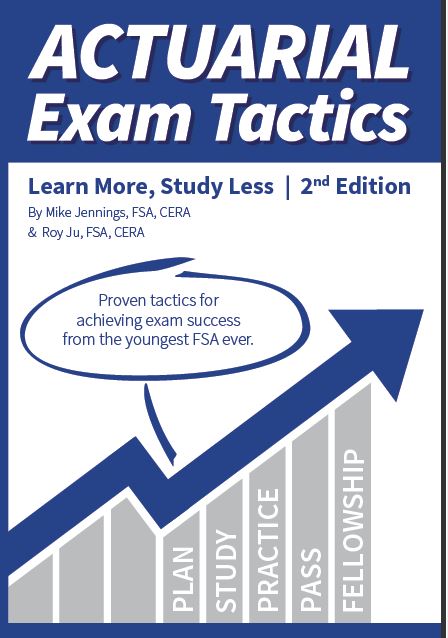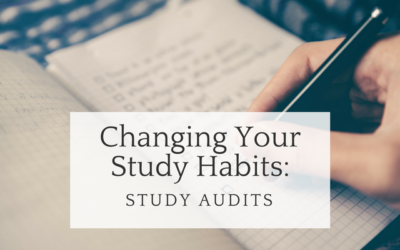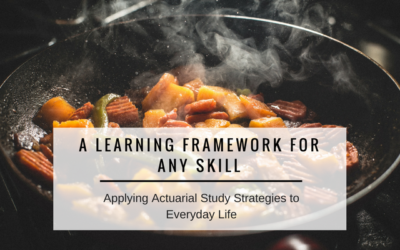
Learn How to Pass Your Exams in Less Time with Strategies from the World’s Youngest Actuary
“I highly recommend this book, not just for actuarial exam students, but for anyone who wants to understand and internalize new information.” -Susan Watson, MS, FSA
Tips from the world's youngest actuary
Research-backed study methods
Decrease your study time
Short text packs a big punch
Endorsed by Professors & Credentialed Actuaries
Read reviews below from Professors and actuaries who know what it takes to pass the exams.
How to study
What Our Reviewers Are Saying
Don’t just take it from us, let our reviewers do the talking!
One of the reasons many people cite for not completing actuarial exams is the work-life balance. It simply takes too much of a toll on personal and family life to study for the exams. Anyone in this situation, at a plateau or contemplating stopping the actuarial exams, should read this book and consider making adjustments to their study process. For those at the beginning of the exam journey, this is a must read!”
This is truly a book I wish I had earlier in my generation and I feel it will usher in a new frontier of actuarial professionals going forward.”
The usage of scientific proven methods, such as Feynman technique, spacing effect, etc. in studies is not something one can find easily in the school textbooks. This less than 50-page cook book is one of best investments I have made, which I expect to pay ‘dividends’ when I take my next exam in the near future.”
See more reviews from college students, career-changers and working actuaries on Amazon
About this book
Conventional actuarial study advice: Buy a manual, read each chapter, do as many practice problems as possible, and spend 100 hours per exam hour in preparation for the exam.
Is there a better way?
This question is the premise of Actuarial Exam Tactics: Learn More, Study Less. In this book, you will find actionable advice to questions such as:
- What parts of the material should I focus on more than others?
- How can I make my review sessions more productive? (When and How to review)
- How do I create a study schedule and stick to it?
- How can I pass the exams while spending less time than “100 study hours per exam hour”?
- What should I do if I fail an exam?
This book presents the study strategies that helped Roy Ju become the world’s youngest actuary, finishing the exams at the age of 20. You may be asking: these strategies worked for Roy, but will they work for the average actuarial student?
This was the question that co-author Mike Jennings asked when first learning of Roy’s strategies. After 1.5 years of testing these strategies and accelerating his own exam process (passing 2 preliminary exams, a fellowship exam, the FAP modules and the FSA modules over this period), Mike knew that he and Roy had to share these strategies with all actuarial students.
Since releasing the first edition, Actuarial Exam Tactics has sold thousands of copies; it has been reviewed in industry magazines; and it has been adopted as the go-to reference by several universities along with the Actuarial Society of South Africa.
Read more about Actuarial Exam Tactics on our blog
Changing Your Study Habits: Study Audits
Knowing the optimal study strategy isn’t enough – it all comes down to implementation. Here’s one habit that can help bridge the gap between knowledge and implementation.
A Learning Framework For Any Skill
How can your actuarial exam study skills be applied to learning any skill in general? In this article, we explore two examples: cooking and college classes.
Is this book right for me?
Is our book the right tool to take your exam performance to the next level? Read more to find out.
Frequently Asked Questions
Is this book for the prelim or FSA exams?
In our Articles section of the site, we address some specific applications of these strategies to both types of exams, but the strategies themselves are universal.
These strategies worked for Roy, but will they work for other students?
The short answer: Yes.
Co-author Mike Jennings was the first “guinea pig” for testing these strategies. Coming off of a failed Exam MLC sitting, Mike applied these study strategies to pass 2 prelim exams, the FAP modules, the FSA modules, and an FSA exam over the next 1.5 years.
Reviewers of the book have also relayed their successes with implementing these strategies, from the prelim to fellowship exams.
I've already been passing the exams with my current study strategies - does this book have anything else to offer?
What if the strategies don't end up working for me?
Does this book offer shortcuts to the exam process?
Rather, the book aligns with and promotes the educational objectives of the exams by teaching you better ways to absorb and retain the material, furthering your growth as an actuary.
How can we stay informed on future updates and additional content to the book?

“The book is precisely as long as it should be: concepts explained, brief examples given and done. No unnecessary fluff. And as other reviewers have noted: the techniques work, plain and simple.”



